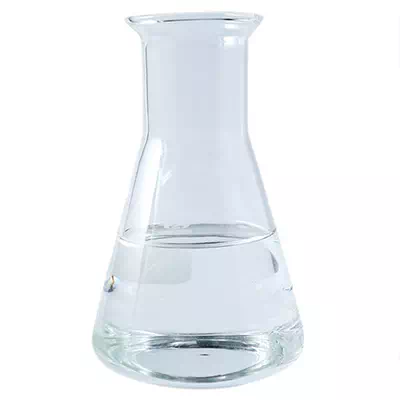

Urea-formaldehyde resin is a thermosetting resin synthesized by the polycondensation reaction of urea and formaldehyde. It has the characteristics of low cost, fast curing and high bonding strength. It is widely used in wood processing, building materials and other fields. Its modified products (such as melamine modification) can improve water resistance and stability.
Wood and furniture manufacturing
Plywood/ecological board: As a wood adhesive, it is used in the production of multi-layer solid wood paint-free boards, furniture cabinets, etc., with high bonding strength and high temperature resistance.
Woodworking glue powder: Powdered urea-formaldehyde resin (such as Jingbao wood glue powder) is suitable for processes such as piecing and pressing, and supports rapid curing.
Construction and industry
Mine and tunnel plugging: Modified urea-formaldehyde resin glue is used for pouring plugging, with rapid curing and water resistance, suitable for oil wells, coal mines and other scenes.
Waterproof coating and sand fixer: As the basic material of sand core casting and sand fixer, it improves structural stability.
Special uses
Insulation materials: Liquid urea-formaldehyde resin is used for fireproof insulation treatment of white wax pipes and yellow wax pipes.
Paper and packaging: Water-soluble resin powder is used for mounting paper and corrugated paper adhesives, with excellent moisture-proof performance.
Product type:
Liquid type: mainly used for wood bonding, plugging glue, etc., the price fluctuates greatly, and needs to be priced according to viscosity and environmental protection level (such as E0/E1/E2).
Powder type: easy to transport and store, suitable for paper treatment agents, putty powder, etc., supports 1kg minimum order, high flexibility.
Pay attention to environmental certification (such as E0-level low formaldehyde emission) and modification technology (such as melamine modification to improve water resistance).
Bulk purchases can be negotiated for preferential prices, and some suppliers support "large quantity, preferential prices".
Formaldehyde release: Traditional urea-formaldehyde resin may release free formaldehyde, which needs to be reduced through modification processes (such as adding formaldehyde scavengers) to meet E0/E1 standards.
Storage and transportation:
Liquid resins need to be stored away from light and moisture, and powdered products need to be sealed to prevent agglomeration.
The transportation of hazardous chemicals must comply with UN standards, and some modified products can simplify the process due to their low toxicity.
Urea-formaldehyde resin occupies an important position in the industrial field due to its high cost-effectiveness and wide applicability. When purchasing, it is necessary to select the modification type (such as high temperature resistance, waterproof) according to the specific application scenario, and give priority to environmentally certified suppliers. For customized needs (such as mine plugging glue formula), it is recommended to directly contact the manufacturer who provides technical support.
Urea-formaldehyde resin adhesive is a viscous initial urea-formaldehyde resin obtained by polycondensation of urea and formaldehyde in the presence of a small amount of catalyst (alkaline catalysts include ammonia water, caustic soda, sodium carbonate and sodium phosphate, etc., acidic catalysts include formic acid, oxalic acid, acetic acid and hydrochloric acid, etc.). When used, a curing agent is added to form an insoluble and infusible cross-linked structure. Urea-formaldehyde glue is also available in powder form, which is made from liquid urea-formaldehyde resin after spray drying. It has a long storage period and can generally be stored for 1 to 2 years. Compared with phenolic resin adhesive, the advantages and disadvantages of urea-formaldehyde resin adhesive are as follows.
1. Advantages of urea-formaldehyde resin glue
① It is a colorless and transparent liquid or milky white liquid, which is non-polluting to the glued objects.
② Less toxic and good light transmittance.
③ Low price and easy to use.
2. Disadvantages of urea-formaldehyde glue
① The glue contains free formaldehyde and the glue layer is easy to age.
② Water resistance and strength are lower than phenolic glue.
1. Used as an adhesive for wood, plywood, furniture manufacturing, agricultural machinery repair and other bamboo and wood materials, a treatment agent for fabrics and paper, and can also be used to mold household electrical appliances, bottle caps, buttons and other daily necessities.
2. Used in the manufacture of fiberboard, foam board and bamboo wood adhesives, also used in fabric and paper treatment agents, etc.; used in the manufacture of daily necessities such as bottle caps and buttons; used in the manufacture of wood, plywood, furniture, repair of agricultural machinery and other bamboo and wood materials adhesives
3. Production of artificial boards
4. Used in the manufacture of wood, plywood, furniture, repair of agricultural machinery and other bamboo and wood materials adhesives
5. Used in the production of panels and parts of civil electrical appliances
6. Used in pressing civil electrical appliances, daily parts, mechanical accessories, various buttons, utensil handles, knobs, decorative parts, etc.
7. Used in the manufacture of daily necessities such as bottle caps and buttons
8. Used in pressing or injecting electrical appliances, instrument housings and civil electrical appliance templates, parts, etc.
9. Used in the manufacture of adhesives
10. Used in wood adhesives, reservoirs, drilling plugging agents, textile finishing agents
Urea (carbamide) and formaldehyde are condensed into a low molecular weight initial product solution, which is then vacuum dried to become a solid.
Sales hotline:

 Scan and consult wechat customer service
Scan and consult wechat customer service